Principle and typical design of household photovoltaic distribution box
Distribution box is an important part of photovoltaic system, which is not high in total cost, but it is related to the safe operation and operation and maintenance of photovoltaic system. This article mainly introduces how to select switches and cables for PV household distribution boxes, as well as typical electrical design solutions for your reference.

First, the basic composition of household photovoltaic distribution box
The household distribution box generally consists of a knife switch, a self-resetting over-voltage protector, a circuit breaker, a surge protector backup circuit breaker, and a surge protector.
1, circuit breaker
The circuit breaker (open circuit, miniature circuit breaker) mainly plays the role of overload and short circuit protection in the line, and at the same time plays the role of infrequently breaking the line under normal conditions. The main technical parameters are rated current and rated voltage. The rated current is 1.2~1.5 times of the maximum output current of the inverter AC side. Common specifications are 16A, 25A, 32A, 40A, 50A and 63A. The rated voltage is single phase 230V and three phase 400V.

2, self-resetting over-voltage and undervoltage protector
Self-resetting over-voltage and under-voltage protector is a commonly used protection switch, mainly used in low-voltage power distribution system. When the over-voltage and under-voltage in the line exceed the specified value, it can be automatically disconnected, and the line voltage can be automatically detected. The medium voltage can be automatically closed when it returns to normal. It is double-protected with the inverter's automatic over-voltage. The common model specifications are 20A, 25A, 32A, 40A, 50A, 63A, etc. (Rated current over-voltage and undervoltage protector rated current ≥ main breaker rated current).

3, surge protector
Also known as lightning arrester, when a sudden current or voltage is suddenly generated in an electrical circuit or communication line due to external interference, the surge protector can conduct shunting in a very short time, thereby avoiding surges to other devices in the circuit. damage. Selection rule, the maximum operating voltage Uc>1.15U0, U0 is the nominal voltage of the neutral line of the low voltage system, that is, the phase voltage is 220V. The single phase generally selects 275V, the three phase generally selects 440V, and the nominal discharge current selects In=20kA (Imax=40kA).

4, surge protector backup fuse
When the inrush current through the surge protector is greater than its Imax, the surge protector will be broken down, causing a short circuit fault in the loop. To cut off the short circuit fault, a circuit breaker or fuse is required. Each time a lightning strike occurs, the surge protector will be aging. If the leakage current exists for a long time, the surge protector will overheat and accelerate the aging. At this time, the thermal protection system of the circuit breaker or fuse is required to reach the maximum withstand the surge protector. Disconnect the surge before the heat is activated. Generally, Imax>40KA should be selected from 40~63A, and Imax<40KA should be selected from 20~32A.
The switch on the front of the surge protector can be equipped with fuses and circuit breakers. The characteristics of the fuse; the fuse has a long-delay and instantaneous current two-stage protection function with inverse time characteristics, which are used for overload and short-circuit protection respectively, that is, the fuse must be replaced after the fuse is blown. Features of the circuit breaker: The circuit breaker has instantaneous current protection and overload thermal protection. After the fault is disconnected, it can be manually reset without having to replace components.
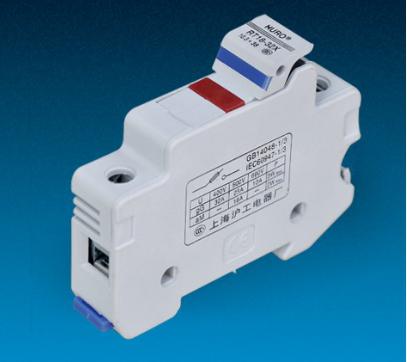
5, knife switch
Mainly as infrequently manually turning on and off the AC and DC circuits or as an isolating switch, creating an obvious breaking point and playing a safety prompt. Selection rules, knife switch rated current ≥ loop main breaker rated current, common specifications are 16A, 32A and 63A.
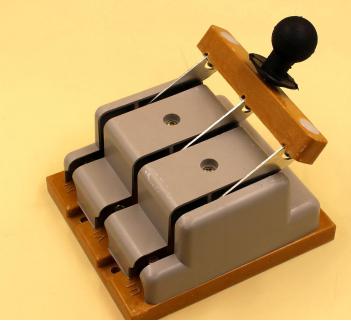
The distribution box must have a physical isolation device to make the circuit have obvious breakpoints, and to ensure the safety of personnel in the case of maintenance and maintenance. This device is called the isolating switch, commonly known as the knife switch, air switch, mainly for overcurrent protection, popularly speaking, short circuit protection. Once a short circuit occurs, the current will increase rapidly. When the threshold is exceeded, the air switch will automatically trip to protect it. However, the air switch may be broken down or malfunction. Only a knife gate can achieve a complete disconnection.
6, AC side cable
When selecting an AC cable, it is best to choose a soft copper wire. On the one hand, the copper wire has a small resistivity, a small loss, a large current carrying capacity, and on the other hand, it can avoid chemical corrosion of copper and aluminum. The rated current of the cable is typically 1.25 times the maximum continuous current in the calculated cable.
7, energy metering
General photovoltaic energy meters are assembled with the distribution box. There are also places where the meter is separated from the distribution box. It is better to put the distribution box together with the meter. First, the distance is relatively small. The second is to save a box. The third is convenient for inquiry and maintenance. In China's household photovoltaic power stations, the electricity meters are provided and installed free of charge by the power supply bureau. In order to prevent individual users from changing the meter settings, the power distribution box must have safety devices installed on the door of the meter, and only the power supply bureau can be opened.
8. Selection of common household photovoltaic system circuit breakers and cables:

Second, the typical household single-phase distribution box design
The box is selected, and the metal case is better than the plastic case. Among the metal cases, stainless steel is the best. In the metal box, the cost-effective one is the galvanized sheet spray box, and the spray has the function of secondary anti-corrosion. Regardless of whether your PV distribution box is installed outdoors or indoors, you need to pay attention to the dustproof and waterproof specifications of the cabinet. IP65 grade should be used outdoors, IP21 grade should be used indoors. If it is in the harsh coastal or salt spray environment, when selecting PV distribution box, please choose galvanized sheet spray, aluminum zinc plate spray, 304 stainless steel or higher size cabinet for corrosion protection.
Electrical design of single-phase distribution box for frequent users
1, 3kw single-phase distribution box

2, 5kw single-phase distribution box

3, 6kw single-phase distribution box
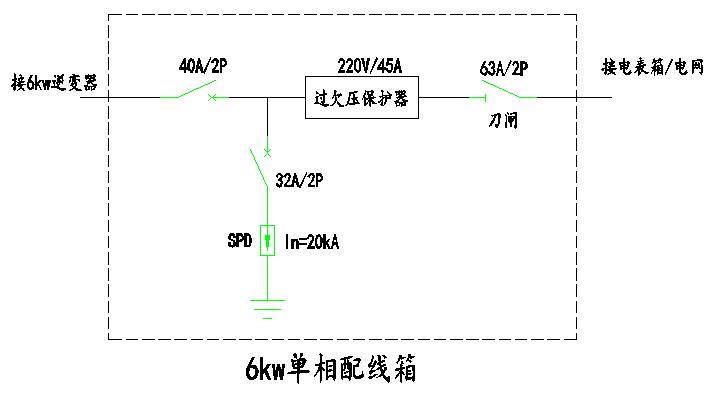
4, 8kw single-phase distribution box
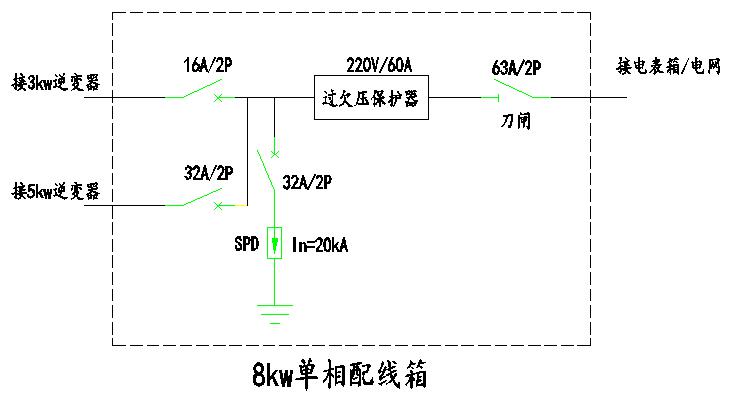
5, 10kw single-phase distribution box
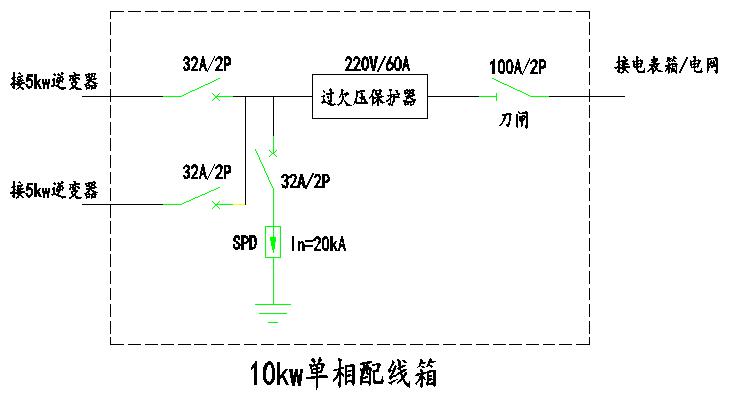
Each province has different requirements for grid connection. In some places, there are some special requirements for the distribution box. For example, is there a meter for the distribution box? Whether the distribution box is required to install an anti-island device in the grid access scheme. When we choose to purchase a PV distribution box, we must first confirm the requirements with the power supply bureau, and then confirm the specifications with the manufacturer.
The UCF pillow block mounted bearing series has four bolt holes, and a set screw lock is designed for mounting onto bearing surfaces parallel to the shaft axis, such as conveyor belts. This ready-to-mount unit has solid base cast iron housing, chrome steel bearings, and is designed for efficient operation at a wide range of speeds. This one-piece pillow block housing allows for a stationary outer ring and rotating inner ring. Insert bearing maintains the separation between moving parts to reduce rotational friction, and to support radial and axial loads. The bearing is secured to the shaft with set screws to prevent slippage. This mounted bearing is used in food and beverage manufacturing, textile industry and many other industrial manufacturing.
Pillow blocks are usually referred to the housings which have a bearing fitted into them & thus the user need not purchase the bearings separately. Pillow blocks are usually mounted in cleaner environments & generally are meant for lesser loads of general industry. These differ from "plummer blocks" which are bearing housings supplied without any bearings & are usually meant for higher load ratings & corrosive industrial environments. However the terms pillow-block & plummer-block are used interchangeably in certain parts of the world.
However fundamental application of both types is the same which is to primarily mount bearings safely enabling their outer ring to be stationary while allowing rotation of the inner ring. The housing is bolted to a foundation through the holes in the base. Bearing housings are either split type or unsplit type. Split type housings are usually two piece housings where the cap and base can be detached. While certain series are one single piece housings. Various seals are provided to prevent dust and other contaminants from entering the housing. Thus the housing provides a clean environment for the expensive bearings to freely rotate hence increasing their performance and duty cycle.
Bearing housings are usually made of grey cast iron. However various different grades of metals can be used to manufacture the same.
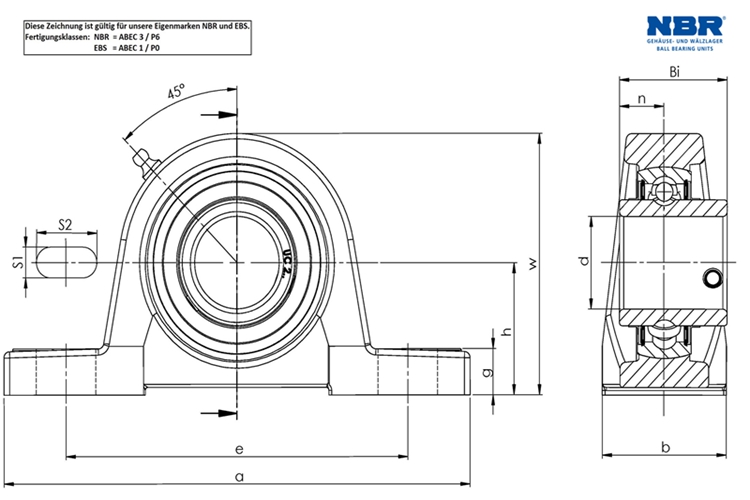
Ucf Pillow Bearing,Ucf Pillow Block Bearing,Ucf 207 Flange Bearing,Flange Mounted Pillow Block Bearing
Shijiazhuang Longshu Mechanical & Electrical Equipment Trading Co., Ltd. , https://www.longsbearing.com
